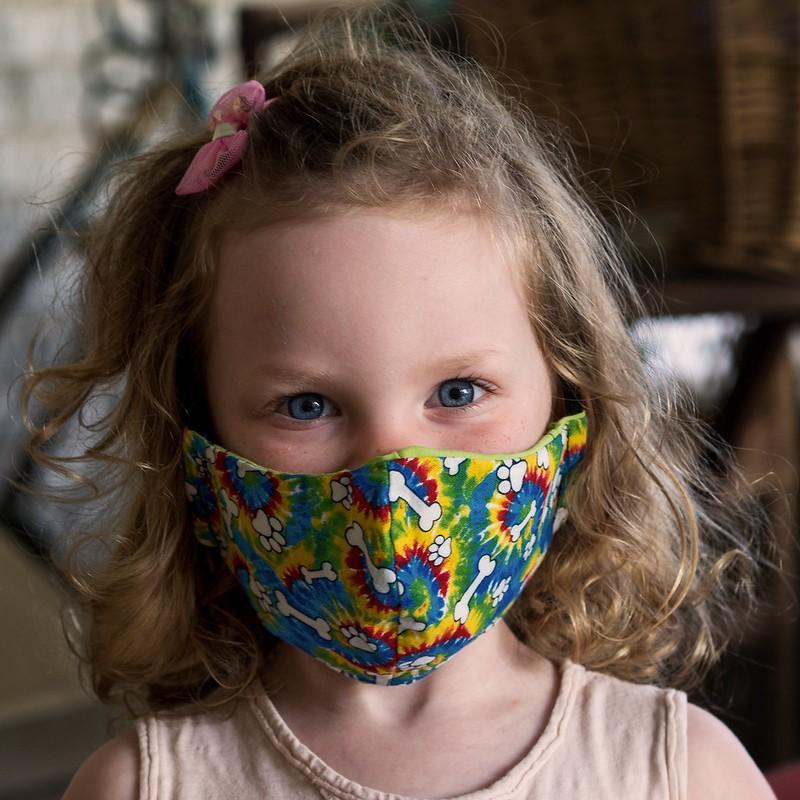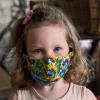While the proportion of COVID-19 cases in children has tripled or quadrupled since the start of the pandemic, it remains below their proportion of the US population, and hospitalizations and deaths are uncommon—although racial minorities and those with public insurance and underlying conditions appear to be at higher risk for serious outcomes, according to two new studies.
Case growth rate by region, month
In the first study, published late last week in Pediatrics, researchers from the American Academy of Pediatrics and the Children's Hospital Association analyzed COVID-19 case data from the websites of 49 state health departments that report cases by age, as well as from two cities and two territories, starting Apr 16.
As of Sep 10, there were 549,432 total pediatric COVID-19 cases in the United States, accounting for roughly 7.3% of all cases in the country. The case growth rate in kids varied substantially by region, with a preponderance of cases in the Northeast in April, followed by large increases in the South and West in June and in the Midwest in mid-July.
The percentage of newly reported pediatric COVID-19 cases ranged from 3% in April to 12.0% to 15.9% in the past 2 months. Children compose about 22.6% of the country's population.
But children's hospitalization and death rates have remained low and steady. On Sep 10, children made up only about 1.7% of total COVID-19 hospitalizations, with roughly 2.0% of infected children requiring hospitalization. Similarly, children accounted for 0.07% of total deaths, and their death rate was only 0.01%.
The authors cautioned that states' COVID-19 case reporting methods vary and that it is unknown how many children have been infected but not tested and how much of the increase in case rates is because of increased testing capacity, noting that the Centers for Disease Control and Prevention testing data show that testing of children has stayed at 5% to 7% since late April.
"Going forward, states should continue to report cases, testing, hospitalizations, and mortality by age so that the effects of COVID-19 on children’s health can be closely monitored," the authors wrote.
In a commentary in the same journal, Andrea Cruz, MD, MPH, of Baylor College of Medicine, and Jeffrey Shaman, PhD, and Peter Dayan, MD, both of Columbia University, called for broader availability of testing for children and standardization of case reporting across the country to enable transparent measurement and assessment of the effects of public health interventions and, in the future, vaccine efficacy.
They also said that uniform reporting of pediatric data by age would lead to a better understanding of coronavirus transmission dynamics in younger versus older children. For example, it could yield more data about whether older children are more likely than younger ones to spread COVID-19.
"Treating the entire pediatric age cohort as monolithic has the potential to bury important epidemiological associations and trends, particularly if factors other than viral load are most associated with the transmission of severe acute respiratory syndrome coronavirus 2 [SARS-CoV-2, the virus that causes COVID-19]," they wrote.
"The ability to assess data separately for younger and older children will become even more important with the emphasis on school reopenings."
Substantial disparities in testing, infections
The second study, published today in JAMA Pediatrics, involved analysis of electronic health records from 5,374 COVID-19 patients 25 years and younger (average age of 8.8 years) in seven US children's hospitals from March to Sep 8.
Of the 5,374 patients with positive test results (135,794 [4%] of those tested) 359 (7%) required hospitalization, 99 (28%) of them needing intensive care unit (ICU) stays and 33 (9%) requiring mechanical ventilation. Eight children (0.2%) died, for a case-fatality rate of 0.15%.
Black, Hispanic, and Asian children were tested less often than whites (black odds ratio [OR], 0.70; Hispanic OR, 0.65; Asian OR, 0.60) but were significantly more likely to test positive for the coronavirus (black OR, 2.66; Hispanic OR, 3.75; Asian OR, 2.04).
Increased risk of infection was associated with older age (5 to 11 years OR, 1.25; 12 to 17 years OR, 1.92; 18 to 24 years, 3.51), having public-payer health insurance such as Medicaid (OR, 1.43), and having been tested as an outpatient (OR, 2.13) or emergency department patient (OR, 3.16).
Patients younger than 1 year or older than 12 and those with a history of public-payer insurance were 1.5 to 3 times more likely than others to become seriously ill, while those with a progressive, chronic underlying illness were 6 times more likely.
The researchers noted that the number of children diagnosed as having Kawasaki disease (KD), which shares some features with the emerging coronavirus-related multisystem inflammatory disease in children (MIS-C), was 40% lower in 2020 than in 2018 and 2019 (259 vs 433 and 430, respectively), which they say corresponds to a decrease in population rates. In this study, 107 of the 259 children with KD (41%) were tested for COVID-19, 8 (8%) with positive results. Six severely ill COVID-19 patients were diagnosed as having Kawasaki disease.
"Our finding that the number of diagnosed cases of KD is reduced in 2020 suggests that patients presenting with MIS-C likely do not receive diagnoses of KD, which should not be used as a proxy for this new entity," the authors wrote. "Although we cannot exclude the possibility that the reduction in KD diagnoses is the result of incomplete ascertainment owing to lower overall health care use during the pandemic, it would be unusual for a syndrome of this severity."
Factors linked with lower COVID-19 testing were noncancerous chronic disease, while preexisting respiratory conditions were tied to lower risk of positive test results. Children who had cancer, heart disease, or endocrinologic, gastrointestinal, genetic, blood, musculoskeletal, mental health, or metabolic disorders were at increased risk of positive test results.
"While the overall risk is low in this group of children, we see significant disparities in those who are testing positive and developing severe disease, which follows what we see in adults," coauthor Hanieh Razzaghi, MPH, of Children's Hospital of Philadelphia said in a hospital press release.
Razzaghi called for further research into the social determinants of COVID-19 risk, such as exposure to air pollution and the likelihood of family members to work in essential jobs that require in-person work. "Similarly, it is important to understand differences in the biology of infection that cause different rates of symptoms between patients, so we can best protect children at higher risk," she said.




















